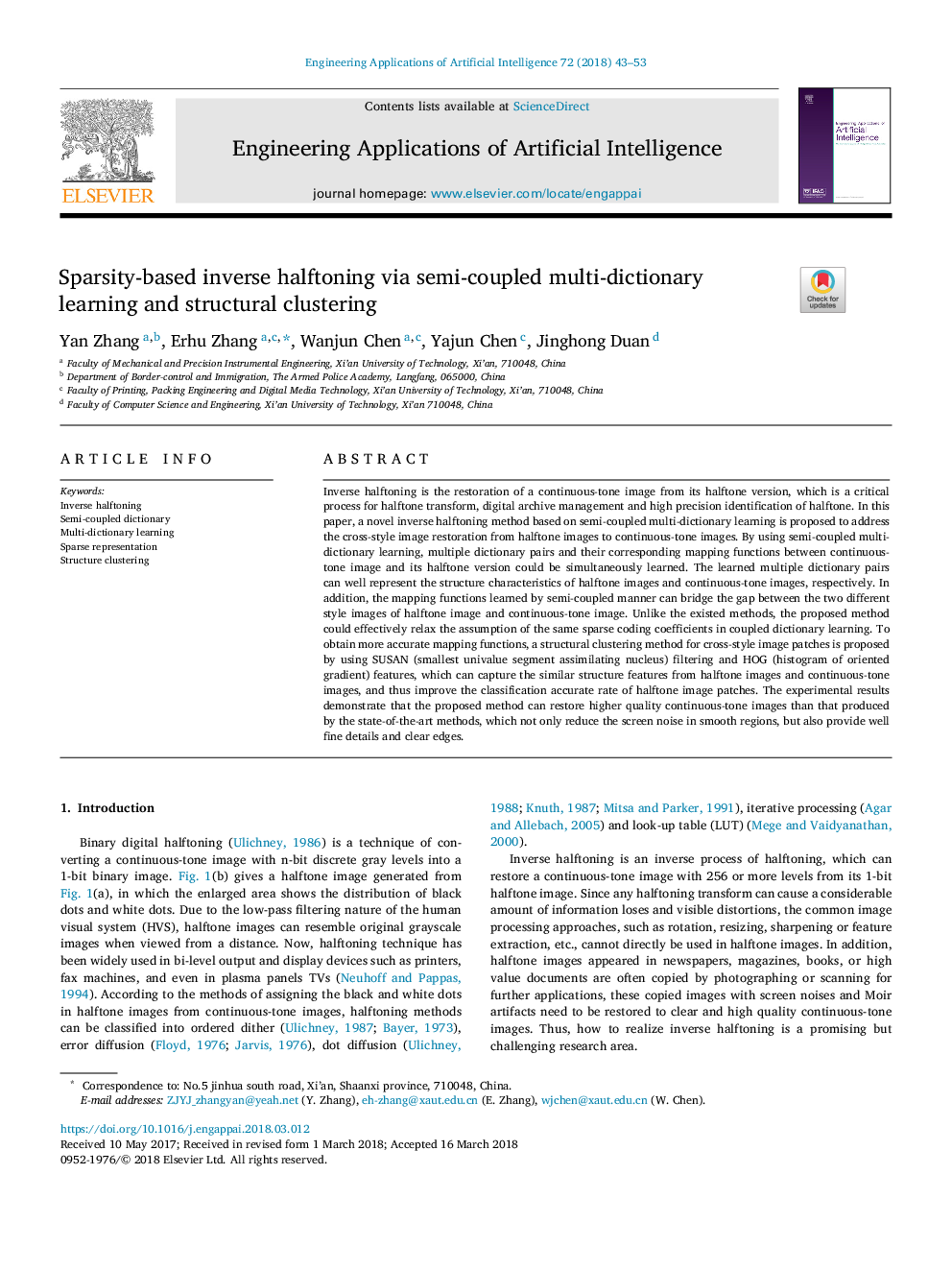| Article ID | Journal | Published Year | Pages | File Type |
|---|---|---|---|---|
| 6854162 | Engineering Applications of Artificial Intelligence | 2018 | 11 Pages |
Abstract
Inverse halftoning is the restoration of a continuous-tone image from its halftone version, which is a critical process for halftone transform, digital archive management and high precision identification of halftone. In this paper, a novel inverse halftoning method based on semi-coupled multi-dictionary learning is proposed to address the cross-style image restoration from halftone images to continuous-tone images. By using semi-coupled multi-dictionary learning, multiple dictionary pairs and their corresponding mapping functions between continuous-tone image and its halftone version could be simultaneously learned. The learned multiple dictionary pairs can well represent the structure characteristics of halftone images and continuous-tone images, respectively. In addition, the mapping functions learned by semi-coupled manner can bridge the gap between the two different style images of halftone image and continuous-tone image. Unlike the existed methods, the proposed method could effectively relax the assumption of the same sparse coding coefficients in coupled dictionary learning. To obtain more accurate mapping functions, a structural clustering method for cross-style image patches is proposed by using SUSAN (smallest univalue segment assimilating nucleus) filtering and HOG (histogram of oriented gradient) features, which can capture the similar structure features from halftone images and continuous-tone images, and thus improve the classification accurate rate of halftone image patches. The experimental results demonstrate that the proposed method can restore higher quality continuous-tone images than that produced by the state-of-the-art methods, which not only reduce the screen noise in smooth regions, but also provide well fine details and clear edges.
Related Topics
Physical Sciences and Engineering
Computer Science
Artificial Intelligence
Authors
Yan Zhang, Erhu Zhang, Wanjun Chen, Yajun Chen, Jinghong Duan,
